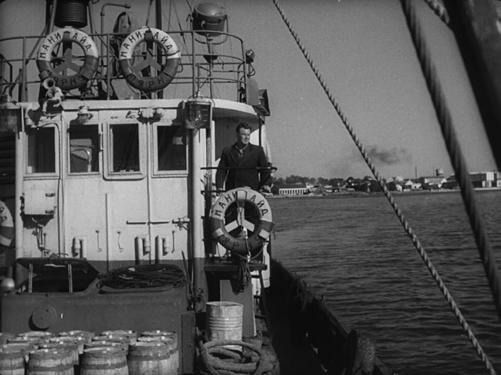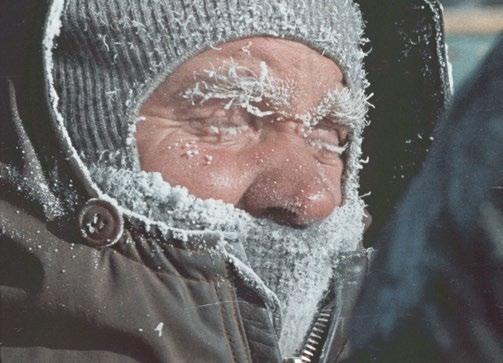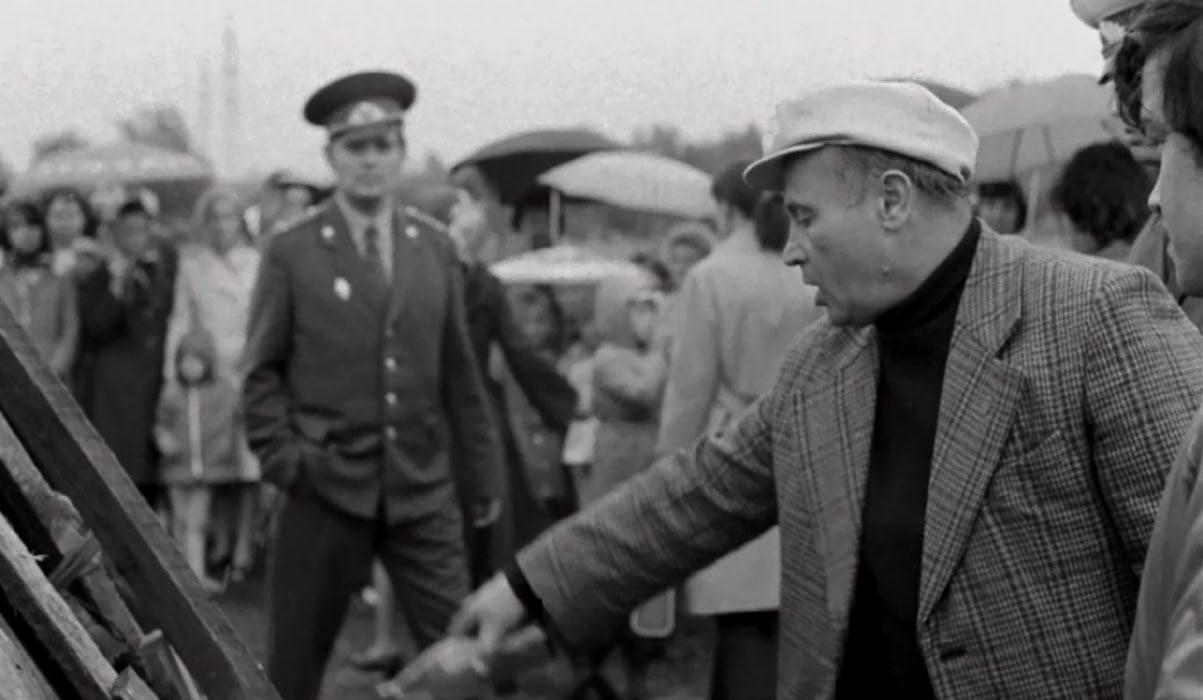
3 minute read
CLASSICS
exciting interpretations of it. Seems like the bigger the distance between the film’s production date and current time, the bolder his hidden camera experiment about Tallinn café culture that mixes the poetry of Artur Alliksaar, cosmology, the Beatles, and Bach. Critic Tristan Priimägi has written: “511 Best Photos of Mars belongs among the best Estonian documentaries. A film that ages, but never gets old, and is being reborn time and time again.”3 without a voiceover. Usually, the voiceover was meant to strengthen the propagandist effect of the visuals, and the standard documentary format was a ten-minute short film with a lot of words but not much to say. Rocky Lullaby was something else, much thanks to Sööt’s contribution. From the reviews of the day: “Director Valeria Anderson has succeeded in fulfilling four main conditions, responsible for the birth of a good documentary. /--/ Fourth: unique style. Here, Anderson owes a lot to Andres Sööt who masters the specific demands of widescreen format very well.”1
This was followed by Sööt’s first author film Ruhnu (1965). A poetic ten-minute etude about the nature and people of Ruhnu island, described by film critic Valdeko Tobro in Tallinnfilm expert council as follows: “I would like to turn your attention to the reproaches that the whole island cannot be seen in the film. But it is not a travelogue but a mood piece. Its meaning is derived from experiencing the mood.”2 Seizing the mood and capturing ingeniously human moments have become Sööt’s trademarks throughout his career. His intuition as a documentarist, and the skill of being in the right place at the right time is unprecedented in Estonian cinema, and there is no one else who could reach a level of such genuineness, especially with the limited means offered by film stock.
With his third film 511 Best Photos of Mars (1968), Sööt’s level of generalization became truly universal. The film’s vibe is unique in the Soviet context – so much so, that every coming decade offers new and
From November 1968 to May 1969, Sööt and his co-director Mati Kask spent some time in the Antarctic, filming White Enderby Land (1969) and Ice Kingdom (1970), the first in black and white, and the other in colour, about life in the South Pole. The films were beautifully scored by Arvo Pärt, and both are among the most visually attractive Tallinnfilm documentary works of all time. No heroic pathos, just the picturesque snowy landscapes that have been exploited to the fullest in the interest of the films. These films have even been called “the most popular Estonian documentaries”, because the material that Sööt and Kask shot was exhaustively repeated in various nature shows of the Soviet Central Television station.4
This decade also featured The Secrets of Tallinn (1967) – one of the very few Estonian films in the city symphony genre, and probably the best, again relying heavily on Sööt’s abilities as a cinematographer.

The Seventies And Two Hit Films
While Andres Sööt directed all his early films in Tallinnfilm studio, he divided his attention between different studios in the 1970s, beginning his collaboration with Eesti Telefilm and Eesti Reklaamfilm (Estonian Advertising Film), plus works commissioned by the Ministry of Culture of the ESSR (Estonian Soviet Socialist Republic). The tempo intensified and thematic expansion was considerable: problem films about the stunted bodies of youth, extraordinary portraits of intriguing characters, recounts of important events, various aviation films, continuing expedition docs, this time to Canada, Africa, and the Northeast Passage. And probably the best film about filmmaking (A Dream, 1978).

We will take a closer look at two especially good films about life events, Midsummer’s Day (1978) and Wedding Pictures (1979).
In Midsummer’s Day, Sööt uses the hidden camera once again to chronicle the summer solstice celebration in Tallinn. Two film writers have captured the essence of Sööt’s observingly human style so well that it’s hard to add anything. Director Andres Maimik has written: “What makes Sööt’s Midsummer’s
1 Valdeko Tobro. “Sookollidest hällilauluni”. Sirp ja Vasar, 19. veebr 1965.
2 Riigiarhiiv ERA.R-1707.1.874
3 Tristan Priimägi. “101 Eesti filmi” (2020). Varrak. Tallinn. Lk. 53.
4 Tatjana Elmanovitš. “Andres Sööt, dokfilmi režissöör ja operaator”. Noorte Hääl, 23. juuli 1972.
511 Best Photos of Mars consists of a selection of cafe and "night club" visitor types from the late 1960s, where old ladies have not yet completely forgotten the bourgeois manners of the Republic of Estonia and soviet youth cannot enter a restaurant without a tie.
Midsummer's Day shows the emotional impoverishment of the townspeople, showing their loneliness and at the same time the exuberant state caused by alcohol in large crowds.














